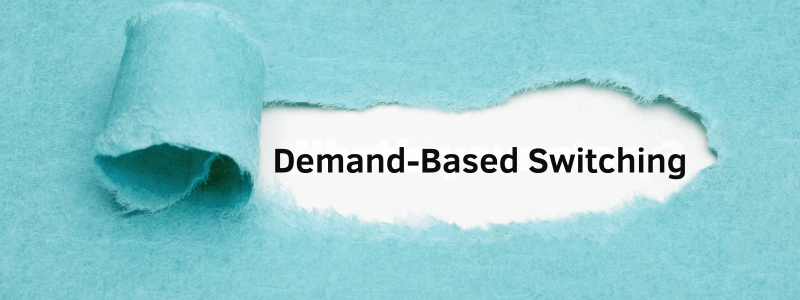
Hey there! Have you ever wondered how you can save a ton on your energy bills without making huge sacrifices? Well, let me introduce you to the magic of demand-based switching. It’s not just a fancy term; it’s a game-changer for anyone looking to cut down on energy costs and be kinder to the environment. So, buckle up as we dive deep into the world of demand-based switching and how it can bring you some serious savings.
Understanding Demand-Based Switching
Definition and Explanation
Alright, let’s break it down. Demand-based switching is all about adjusting the power usage of your devices based on your actual needs. Instead of having everything running at full blast all the time, this system tweaks the energy flow according to demand, hence the name.
Historical Background
This concept isn’t exactly brand new. It has roots in industrial settings where energy efficiency has always been crucial. Over time, the technology has trickled down to residential and commercial applications, making it accessible to everyone.
How Demand-Based Switching Works
Basic Principles
Imagine you’re driving a car. You don’t keep the pedal to the metal all the time, right? You accelerate when you need to and coast when you don’t. Demand-based switching works the same way. It “accelerates” power to devices when needed and “coasts” when demand is low.
Technical Aspects
Now, for the techies out there, demand-based switching involves sensors, smart meters, and control systems. These components work together to monitor energy use in real time and adjust the supply accordingly. It’s like having a tiny energy manager inside your devices!
Types of Demand-Based Switching Systems
Manual Systems
Manual systems are the simplest form. You adjust the settings yourself based on your needs. Think of it like dimming the lights or turning off appliances when they’re not in use.
Automated Systems
Automated systems are where the magic happens. They use sensors and smart technology to adjust settings without you lifting a finger. Imagine your home heating adjusting itself while you’re away, or lights turning off automatically when you leave a room.
Benefits of Demand-Based Switching
Cost Savings
First and foremost, let’s talk money. Implementing demand-based switching can significantly cut your energy bills. By only using power when you need it, you avoid the wastage that adds up over time.
Environmental Impact
Less energy usage means fewer carbon emissions. It’s a win-win for you and Mother Earth. Every bit of energy saved reduces your carbon footprint, making a small but meaningful contribution to environmental conservation.
Increased Efficiency
Efficiency is the name of the game. Demand-based systems ensure that every watt of power is used optimally, reducing wear and tear on your appliances and extending their lifespan.
Implementation Strategies
Assessing Your Energy Needs
Before diving in, it’s crucial to understand your energy consumption patterns. Look at your bills, identify peak usage times, and figure out where most of your energy is going.
Choosing the Right System
Not all demand-based systems are created equal. Depending on your needs, you might go for a simple manual setup or a sophisticated automated system. Research, compare options, and maybe even consult with a pro to make the best choice.
Residential Applications
Smart Thermostats
One of the coolest applications at home is smart thermostats. These little gadgets learn your schedule and adjust heating and cooling accordingly, ensuring comfort and efficiency.
Lighting Controls
Have you ever left the house and forgotten to turn off the lights? With smart lighting controls, that’s a worry of the past. They can be set to turn off when no one’s around, saving energy effortlessly.
Commercial Applications
HVAC Systems
In businesses, HVAC systems are major energy hogs. Demand-based switching can optimize their operation, reducing energy use during off-peak hours without compromising comfort.
Industrial Equipment
For industrial settings, demand-based switching can mean huge savings. Machinery and equipment can be regulated to run more efficiently, cutting down on massive energy expenditures.
Case Studies
Success Stories in Homes
Take the Smith family, for instance. After installing a demand-based system, their energy bills dropped by 30%! They didn’t have to change their lifestyle, just the way their home used energy.
Success Stories in Businesses
Then there’s GreenTech Inc., a small manufacturing firm. By switching to demand-based systems, they not only cut costs but also qualified for green certifications, boosting their market appeal.
Challenges and Solutions
Common Obstacles
Of course, no system is perfect. Initial costs, technical glitches, and the learning curve can be challenging.
Effective Solutions
But don’t worry, solutions abound. Government rebates can offset costs, while professional installers can handle the tech side. Plus, many systems are designed to be user-friendly, minimizing the learning curve.
Future Trends in Demand-Based Switching

Technological Advancements
The future looks bright for demand-based switching. Innovations like AI and IoT are making these systems smarter and more efficient every day.
Industry Predictions
Experts predict that as technology advances and costs come down, demand-based switching will become the norm rather than the exception. It’s a smart investment for a smarter future.
Cost-Benefit Analysis
Initial Investment vs. Long-Term Savings
Sure, there’s an upfront cost to setting up demand-based switching. But think of it like buying a fuel-efficient car. The initial investment pays off over time through substantial savings on energy bills.
Government Incentives and Rebates
Available Programs
Many governments offer incentives and rebates for implementing energy-saving technologies. It’s worth checking out what’s available in your area to help offset costs.
How to Apply
Applying for these programs is usually straightforward. A quick visit to your local government’s website can provide all the details you need to get started.
DIY vs. Professional Installation
Pros and Cons
DIY installations can save money upfront but might lack the polish and efficiency of a professional job. Weighing the pros and cons can help you decide.
When to Call a Professional
For more complex systems, or if you’re not particularly handy, calling a professional can ensure your system is installed correctly and operates at peak efficiency.
Conclusion
Demand-based switching is a fantastic way to save money, boost efficiency, and help the environment. With so many options available, there’s something to suit every home and business. So why wait? Start your journey to smarter energy use today!
FAQs
1. What is demand-based switching?
It’s a system that adjusts power usage based on actual demand, helping to save energy and reduce costs.
2. How much can I save with demand-based switching?
Savings can vary, but many users see reductions of 20-30% on their energy bills.
3. Is it difficult to install a demand-based system?
It depends on the complexity of the system. Some are simple DIY projects, while others might require professional installation.
4. Are there any incentives for installing demand-based switching systems?
Yes, many governments offer rebates and incentives to encourage energy-saving technologies.
5. Can demand-based switching be used in both homes and businesses?
Absolutely! There are applications for residential, commercial, and industrial settings.
To learn more about the importance of securing your systems, read our article on Network Security Monitoring: Protect Your Data.
